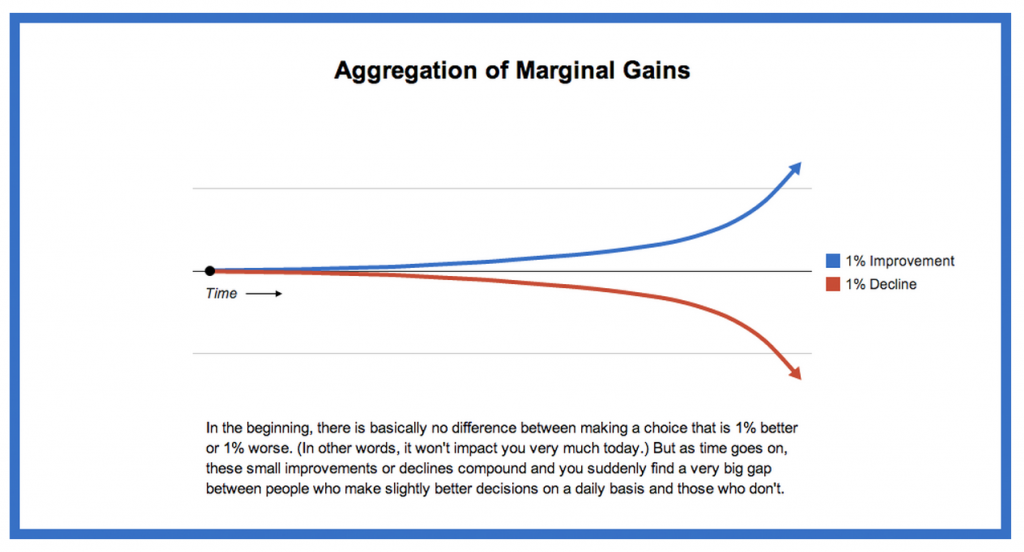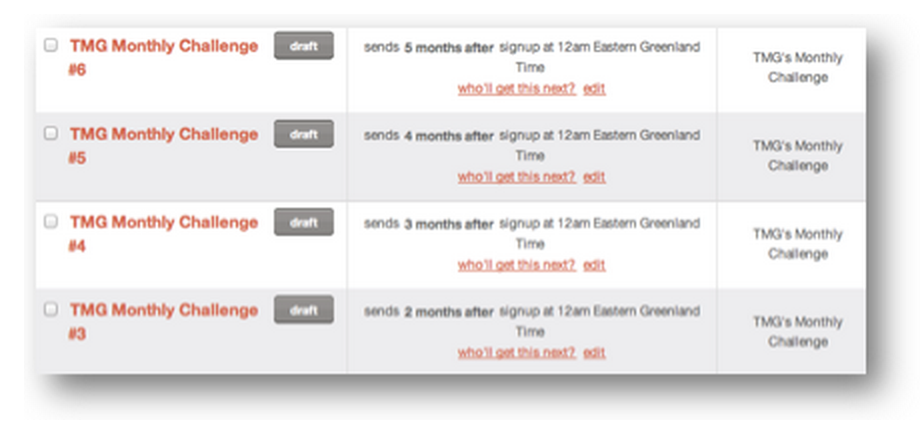

10 Ways to Exponentially Grow Your Traffic in 30 Days
This is a guest contribution from Marcus Taylor of Venture Harbour.
In Western cultures, there is a prevailing belief that you ‘work your way to the top’, ‘climb the ladder’, and make slow and steady efforts to achieve success.
This way of thinking is undoubtedly a smart approach, particularly for bloggers. However, there is an equally smart, yet opposing, belief that’s more common in certain Eastern cultures: leapfrogging straight to the top.
 At the beginning of 2014, I decided to get smart about my blogging. By concentrating on the things that made the biggest difference, I managed to exponentially grow my traffic, quadrupling it within 90 days.
At the beginning of 2014, I decided to get smart about my blogging. By concentrating on the things that made the biggest difference, I managed to exponentially grow my traffic, quadrupling it within 90 days.
How to grow your blog exponentially
Exponential growth happens when you’re effective, which is very different to being busy. We know from Pareto’s Law that 80% of results are often driven by 20% of our actions. To grow your blog exponentially, you’ll need to Identify the 20% of the 20% of the 20%, so that you’re always focusing on the one thing that will have the biggest impact.
Below are 10 examples from personal experience that can lead to exponential increases in traffic. While not all of them will be relevant to your situation, my hope is that they’ll help to get your creative juices flowing and enable you to come up with some ideas that will enable your blog to grow at a faster rate.
1. The aggregation of marginal gains
In 2010, David Brailsford had the tough job of coaching Great Britain’s cycling team for the Tour de France.
He believed in a concept called the ‘aggregation of marginal gains’, which states that if you make a 1% improvement in everything you do, they will compound into incredible results.
He started by improving the obvious things, such as the rider’s nutrition, training program, seat ergonomics, and tire weight. But he didn’t stop there.
David went on to discover which pillow offered the riders the best sleep, and taught them the most effective way to wash their hands to avoid infection. He searched for 1% improvements everywhere.
To cut this fascinating story short, the British team went on to win the Tour de France after just three years of using David Brailsford’s strategy.
If you made a 1% improvement in every aspect of your blogging, from your headline writing skills, to your email signup rate, and page loading speed, you’ll soon notice a compounding effect on your desired outcomes.
2. Only 30% of the World population speak English
It’s estimated that 30% of the World’s population speak English. This implies that more than two-thirds of the planet speak (and search) in non-English languages.
There is, unsurprisingly, a disproportionate amount of blogs competing over English-language traffic. This represents a huge opportunity for bloggers wanting to target traffic in non-English speaking countries.
One of my favourite case studies on exponential blog growth is of a blog that reached 1.4m visitors in under six months by targeting Japanese search terms. The strategy was simple: there are relatively few website targeting Japanese, which makes it easier to rank for competitive keywords.
A client of mine runs the site BinaryOptions.com. After noticing that his market was growing in the Middle East and Asia, he decided to translate his website in Hebrew, Chinese, Japanese, and a handful of other languages using the WPML (WordPress Multi-Lingual) plugin.
Within a matter of weeks, his traffic from non-English speaking countries had almost doubled. That’s not bad for 30 minutes work installing a translation plugin.
Ideally, your content shouldn’t just be translated, it should be localised by someone with a cultural understanding of the countries and languages you’re targeting. However, in the interest of effort and reward, translation plugins can be an effective short-term solution for exponentially increasing the size of your audience.
3. Systems are the secret to scalable results
If you want to see exponential growth, you need to become ruthless with your time and build systems that run themselves. This is the only way to shift your focus away from low-value tasks towards the high-value work that you’re great at.
For virtually all of the projects that I run, I have a degree of social media automation using a combination of tools like IFTTT and Buffer, with a virtual assistant.
I’m also a huge fan of using email autoresponders and marketing automation tools to keep the communities active even when i’m not. One of my sites has had very little attention for over two years, but they still continues to grow due to ‘evergreen’ autoresponder chains that keep the community engaged.
4. Look Forward to Google’s Algorithm Updates
The majority of webmasters fear the unpredictability of algorithm updates. If your strategy is aligned with Google’s mission to deliver the best and most relevant result to users as quickly as possible (and increase their shareholder value), then they can be an event to look forward to.
One of my sites that I haven’t touched in over 18 months doubled in traffic during last month’s soft panda updates. Why? Because four of my main competitors all got wiped off of the search results for being overly short-sighted with their strategy.
While SEO is a complex area with hundreds of constantly-changing ranking factors, it can generally boiled down to a few simple principles:
- Create the best content you can – and proactively promote it.
- Offer the best user experience you can. Make your site beautiful, fast, and easy to use.
- Think long term – build a brand and become the authority on your topic.
The next time Google prunes its search results, will you benefit from the short-sighted websites dropping in the ranks, or will you be one of them?
5. Could you increase your content output tenfold?
One of the most obvious ways to exponentially increase your blog’s traffic is to exponentially increase the amount of content you produce.
When growing KISSmetrics, Neil Patel found that each additional blog post he added to their blog increased weekly traffic by 18.6%. What if instead of publishing one blog post per week, you published 10, or 20?
Or, what if instead of increasing your posting frequency, you increased the length of your content?
This point ties in nicely with point three about building systems. One of the big leaps that many bloggers make is moving from it being ‘their blog’ to building a system of writers and contributors that fuel the content engine. Is it time for you to boost your content output with a team of writers?
6. Could you improve your content quality tenfold?
One counterpoint to the suggestion above is that instead of increasing your content output, you could just improve the quality of your content, multiplying its effectiveness.
While content quality is somewhat subjective, it’s fair to say that the more time we invest into a piece of content, the better it will be. Let’s say you currently spend three hours, on average, writing a blog post. What if your next piece of content took you 30 hours?
By definition, we remark upon things that are remarkable. Any blog post that takes 30+ hours to create is likely to be quite remarkable.
Ask yourself whether the last 10 posts you wrote represent your very best, and if not – would it rock the boat to write a few extremely well crafted blog posts?
7. Could one person transform your blog’s success?
“Relationships help us to define who we are and what we can become. Most of us can trace our successes to pivotal relationships” – Donald O. Clifton, and Paula Nelson.
When I first read the quote above, it hit me like a tonne of bricks. In my case, virtually all of the significant events in my career to date are owed to five or six people. I imagine this trend is true for a lot of us.
Choosing the right professional allies is incredibly important. As a blogger, you’ll unlikely achieve great success without some good allies. I recommend spending some time to identify the relationships and alliances that could skyrocket your blog’s success. Invest in those relationships.
8. Could one blog post transform your blog?
I recently discovered that Mashable wrote one article in February that generated more links and shares than 87 of their articles written in 2013 combined. Imagine if, instead of writing those 87 articles, they had written just ten of those mega-successful articles?
One of the common responses of successful bloggers when asked what they’d do differently if they started again is that they’d work smarter instead of harder.
If there was one blog post that could completely transform your blog’s success, what might it be?
9. Should you zoom-in or zoom-out?
A few years ago I met Gary Arndt during one of his trips to Melbourne. Gary is the man behind Everything Everywhere, which is generally considered to be one of the earliest travel blogs.
He told me that most travel bloggers fail because they’re too late. According to him, it’s near impossible to be a successful travel blogger starting out nowadays, as there’s just too much competition.
I agree. I think it’d be extremely difficult to be a successful ‘zoomed out’ travel blogger i.e. a travel blogger who covers every type of travel, every country, or every aspect of travelling. However, there’s probably a lot of opportunity to be a ‘zoomed-in’ niche travel blogger e.g. one who specialises in glamping, Fiji travel, or travel for yogis.
A good question for many bloggers to ask themselves is are they too zoomed-in or too zoomed-out? When your blog becomes a big fish in a little pond, it’s often healthy to expand the size of the pond – and enter additional niches.
When you’re a small fish in a big pond, it’s usually more sensible to swim in a smaller pond – and completely own that pond for a while.
10. Ten minutes planning saves one hour in execution
Brian Tracy wisely said that “every minute spent planning saves 10 minutes of execution”.
When I analysed how successful blogs such as this one, Mashable, KISSmetrics, and ConversionXL reached millions of readers, I noticed a common theme among several of them: planning.
Nick Eubank’s case study perhaps highlighted this the best: in six months he reached 1.4 million visitors by using analytical models to identify tens of thousands of keywords that were uncompetitive yet high in search volume. Through extreme planning he was able to reach an enormous audience in an incredibly short space of time.
In Summary
It’s said that there are no shortcuts to success, only direct paths. I think that, more accurately, some direct paths are shorter than others.
Despite some of the outliers, growing a blog takes time. It will be an ongoing sequence of plateaus followed by growth spurts, followed by plateaus.
I hope that some of these ideas will translate into the next growth spurt for your blog’s traffic. If you have any thoughts on any of the ideas mentioned, or have any questions, feel free to leave a comment below or reach me on Twitter.
Marcus Taylor is the founder of Venture Harbour, a digital marketing agency that specialises in working with companies in the music, film, and game industries.
Originally at: Blog Tips at ProBlogger
Facebook comments:
No Comments »
No comments yet.
RSS feed for comments on this post. TrackBack URL
Leave a comment


















